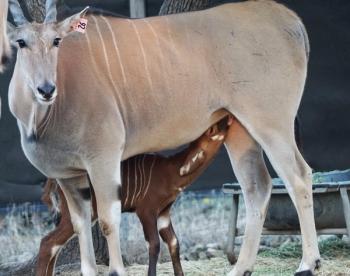
Texas A&M team saves kitten with locked jaw
Skittles, a 6-month-old calico, presented at Texas A&M’s Small Animal Teaching Hospital with her jaw locked shut on one side and fractured on the other.
Audrey Mohan never planned to get a cat, but after she spent time feeding a family of strays living on her fiancé's land, she noticed one of the kittens was in distress. The kitten was lethargic and struggled to drink any water, so she brought her to a local animal hospital. At the hospital, the kitten, whom Mohan named Skittles, weighed less than 1 lb, so she was too small for flea medicine. Skittles also had extremely low red blood cells and an injury on her front leg that was infected and swelled 3 times its normal size. Because of the injury, the local veterinarian performed an amputation, but a new issue presented itself to Mohan.
“About a month after the amputation surgery, she started to lose function in her jaw, and the only way she could eat was by sticking her tongue in and out of her mouth to lick food,” Mohan said.1 “That’s when we were sent to a specialist, who then referred us to Texas A&M.”
Upon arriving at Texas A&M College of Veterinary Medicine & Biomedical Sciences’ Small Animal Teaching Hospital, she was evaluated by its dentistry service. Adriana Regalado-Ibarra, MVZ, DAVDC, noticed Skittles’ jaw was locked on one side and fractured on the other. The team believes that at some point in her life, Skittles suffered a serious injury, and now was the chance to improve her quality of life. Regalado-Ibarra noted that because she was growing when she broke her jaw, the healing process happened quickly, but the bones were not aligned properly, causing her upper and lower jaw to fuse together into 1 solid bone. This led to her mouth completely locking shut.
Skittles needed surgery desperately in order to unlock her jaw, but because of her small size, the procedure required a team of specialists and advanced equipment to ensure a successful outcome.
“Skittles was tiny. That type of surgery at that age becomes risky,” Regalado-Ibarra said.1 “We are working near important parts, like the brain, major blood vessels, and nerves. Instead of cutting the joint and risking unintended damage, we chose to remove a piece of the lower jaw to allow easier movement.”
The team was also worried about putting Skittles under anesthesia because it would be "nearly impossible" to place a breathing tube due to the jaw being locked. By using the smallest endoscope, they were able to navigate through a tiny gap located on the side of Skittles' mouth to locate her airway. They then performed a scope-assisted intubation.1
The procedure lasted 3 hours and required collaboration from multiple departments, including dentistry, radiology, internal medicine, and anesthesiology. When Skittles woke up from the procedure, she meowed for the first time in months.
“She had meowed when her jaw was open as a little kitten, but when it locked shut, she couldn’t make a sound,” Mohan said. “After surgery, she opened her mouth, yawned, and meowed.”
Skittles made a full recovery after her jaw was successfully treated and can now eat and drink with ease. However, her tongue now sticks out due to the misaligned jaw, but her family says it only adds to her charm.
“Skittles’ recovery was a true team effort,” Regalado said. “Every single person involved—including Skittles’ owner and all our medical staff—played a role in her survival.”
Reference
- Dunn M. Texas A&M veterinarians help tiny kitten get her voice back. VMBS News. August 13, 2025. Accessed August 18, 2025. https://vetmed.tamu.edu/news/press-releases/texas-am-veterinarians-help-tiny-kitten-get-her-voice-back/
Newsletter
From exam room tips to practice management insights, get trusted veterinary news delivered straight to your inbox—subscribe to dvm360.






